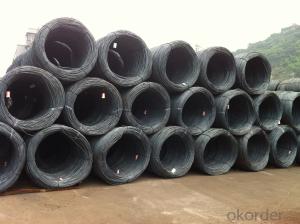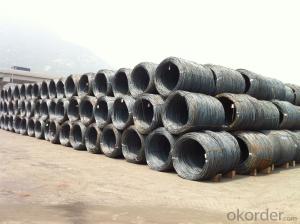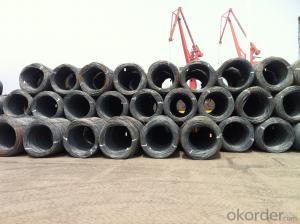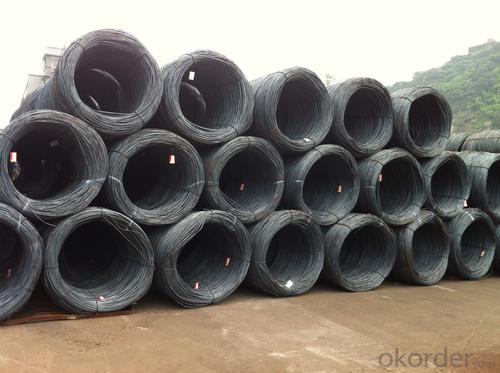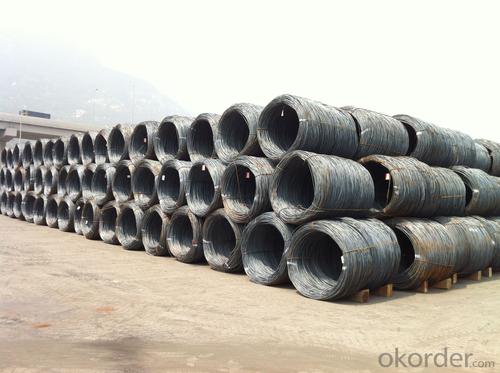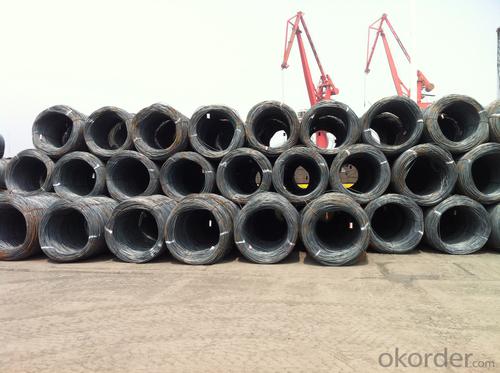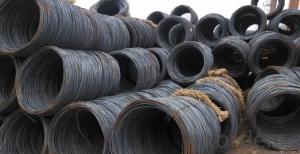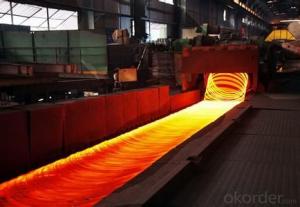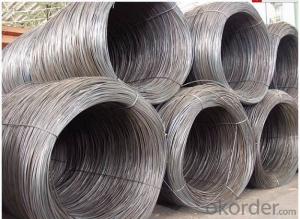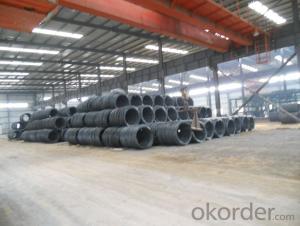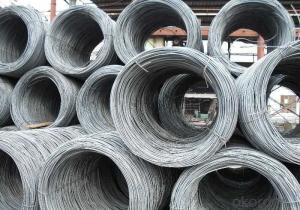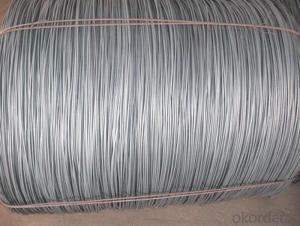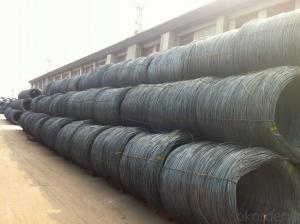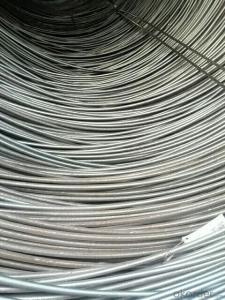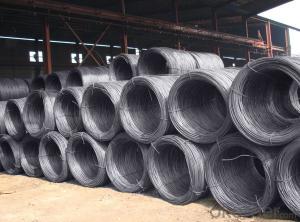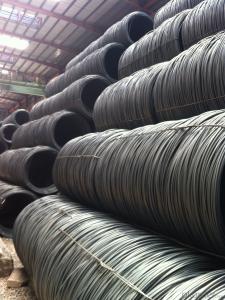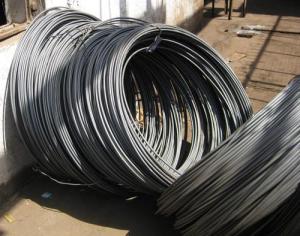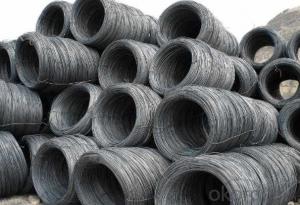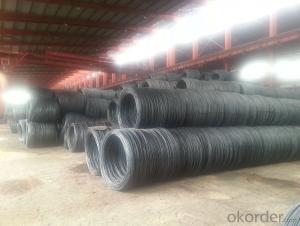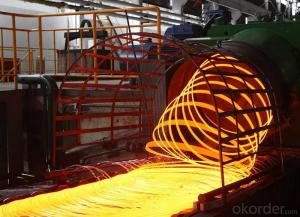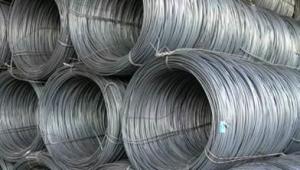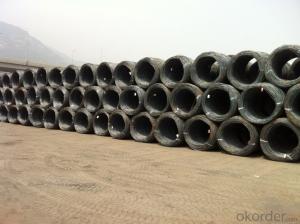Hot Rolled Steel Wire rods in Grade SAE1006-1018
- Loading Port:
- Tianjin
- Payment Terms:
- TT OR LC
- Min Order Qty:
- 25 m.t
- Supply Capability:
- 20000 m.t/month
OKorder Service Pledge
OKorder Financial Service
You Might Also Like
OKorder is offering Carbon Steel Wire Rod at great prices with worldwide shipping. Our supplier is a world-class manufacturer of steel, with our products utilized the world over. OKorder annually supplies products to European, North American and Asian markets. We provide quotations within 24 hours of receiving an inquiry and guarantee competitive prices.
Product Applications:
Carbon Steel Wire Rod are ideal for structural applications and are widely used in the construction of buildings and bridges, and the manufacturing, petrochemical, and transportation industries.After hot-rolled the products shaped into coil and delivery as finished product, including round, square, rectangular, hexagonal and so on. Since most of the products are round, it is generally called wire rod. Carbon steel wire rod is widely used in construction and manufacturing. Carbon steel wire rod is mainly used for reinforcement of reinforced concrete and welded structure or reprocessed (roberts , nail, etc.) materials, especially used to produce wire drawing, welding electrode, nails, spring, electronic, precise machinery parts and so on.
Product Advantages:
OKorder's Carbon Steel Wire Rod are durable, strong, and resist corrosion.
Main Product Features:
· Premium quality
· Prompt delivery & seaworthy packing (30 days after receiving deposit)
· Corrosion resistance
· Can be recycled and reused
· Mill test certification
· Professional Service
· Competitive pricing
Product Specifications:
Chemical Composition:
Please kindly find our chemistry of our material based on SAE1006/SAE1008 as below for your information
Grade | Chemical Composition (%) | |||||
C | Mn | S | P | Si | B | |
SAE1006 | 0.03~O.07 | 0.32max | 0.045max | 0.040max | 0.30max | 0.0008min |
Mechanical properties | ||||||
Yield strength(N/mm2) | Tensile strength(N/mm2) | Elongation (%) | ||||
250-280 | 350-380 | ≥32 | ||||
Grade | Chemical Composition (%) | |||||
C | Mn | S | P | Si | B | |
SAE1008 | 0.10max | 0.3~0.50 | 0.050max | 0.040 max | 0.15max | 0.0008 min |
Mechanical properties | ||||||
Yield strength(N/mm2) | Tensile strength(N/mm2) | Elongation (%) | ||||
≥195 | 315-430 | ≥30 | ||||
FAQ:
Q1: Why buy Materials & Equipment from OKorder.com?
A1: All products offered byOKorder.com are carefully selected from China's most reliable manufacturing enterprises. Through its ISO certifications, OKorder.com adheres to the highest standards and a commitment to supply chain safety and customer satisfaction.
Q2: What's your shipment type ?
A2: Usually we ship the goods by bulk vessel,if you want load them by container vessels,we can arrange as well .
Q3:What's your payment terms ?
A3:Mostly,we collect the money by T/T and LC at sight . We also accept time LC at 90/120 days sight.
Images:
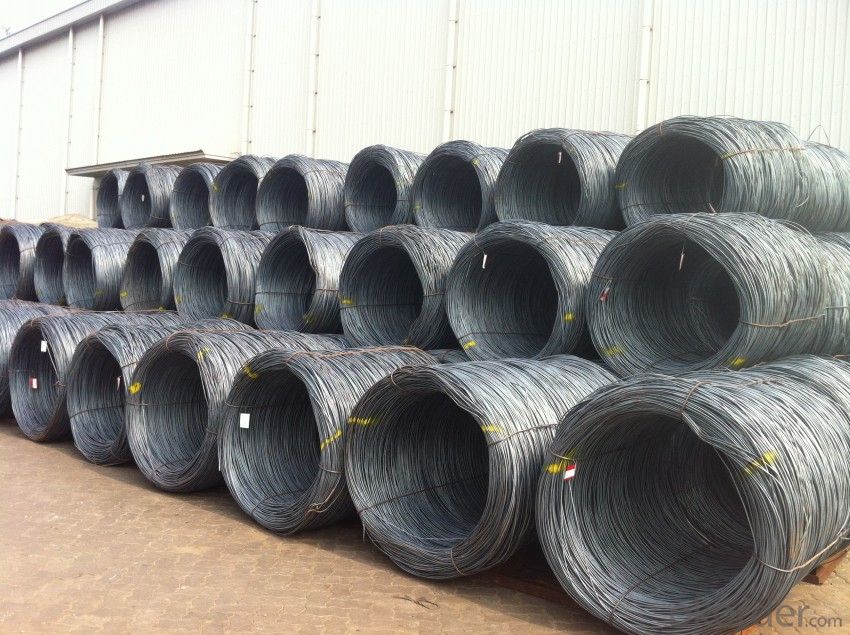
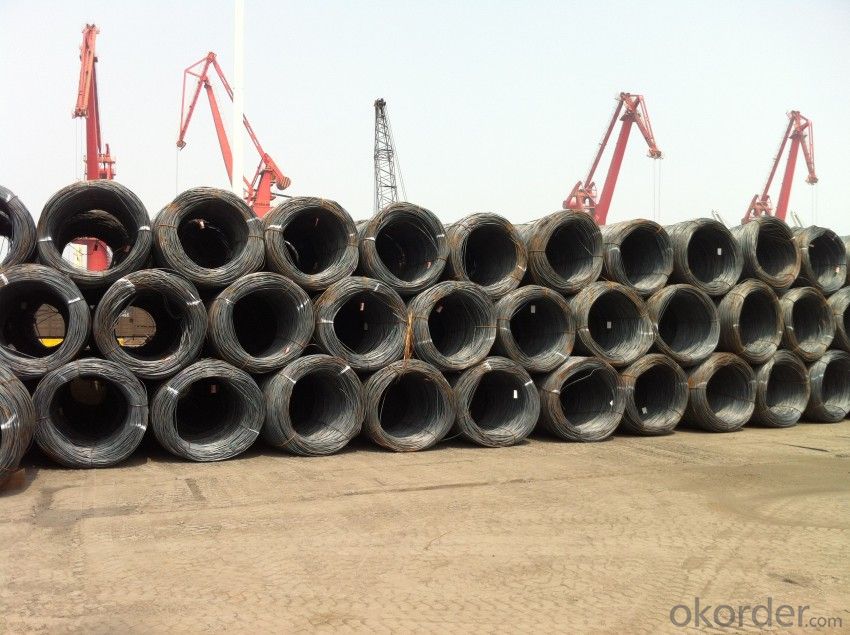
- Q: What are the dimensions and sizes available for steel wire rod?
- The dimensions and sizes available for steel wire rod vary depending on the specific requirements and standards set by manufacturers and industry specifications. These can range from diameters as small as 1.5 millimeters to larger sizes exceeding 20 millimeters. Lengths typically range from 1 meter to several meters, and there may be variations in weight per meter as well. It is always best to consult with manufacturers or refer to industry guidelines to determine the exact dimensions and sizes available for steel wire rod.
- Q: What are the major trends in the steel wire rod industry?
- There are several major trends currently shaping the steel wire rod industry. 1. Increasing demand: One of the most significant trends is the increasing demand for steel wire rods across various industries. The construction sector, automotive industry, and manufacturing sector are the primary drivers of this demand. This surge in demand can be attributed to the growing population, urbanization, and infrastructure development worldwide. 2. Technological advancements: The steel wire rod industry is undergoing significant technological advancements. These innovations are focused on improving the manufacturing process, enhancing the quality of wire rods, and reducing production costs. Automation, robotics, and data analytics are some of the key technological trends that are revolutionizing the industry. 3. Environmental sustainability: With increasing environmental concerns, the steel wire rod industry is also witnessing a shift towards more sustainable practices. Companies are adopting energy-efficient technologies, reducing emissions, and implementing recycling programs to minimize their environmental impact. This trend is driven by both regulatory requirements and the industry's commitment to sustainability. 4. Market consolidation: The steel wire rod industry is experiencing a trend of market consolidation, with larger companies acquiring smaller players and forming strategic partnerships. This consolidation is driven by the need to optimize production capacities, expand global reach, and achieve economies of scale. Such mergers and acquisitions are reshaping the competitive landscape of the industry. 5. Focus on product diversification: To stay competitive in the market, steel wire rod manufacturers are increasingly focusing on product diversification. This involves developing a wide range of wire rod products with varying specifications to cater to the diverse needs of different industries. Customization and flexibility in manufacturing are becoming crucial factors for success in the industry. Overall, the major trends in the steel wire rod industry revolve around increasing demand, technological advancements, environmental sustainability, market consolidation, and product diversification. These trends are driving the industry towards a more efficient, sustainable, and customer-centric future.
- Q: How is steel wire rod used in the manufacturing of wire partitions?
- Steel wire rod is used in the manufacturing of wire partitions as it serves as the primary raw material. The wire rod is processed and transformed into wires of various diameters, which are then woven or welded together to create a sturdy mesh structure that forms the basis of the wire partitions. This steel wire rod provides the necessary strength and durability required for wire partitions, ensuring their ability to withstand heavy loads and provide security in various industrial, commercial, and residential applications.
- Q: What are the common sizes and dimensions of steel wire rod?
- The common sizes and dimensions of steel wire rods vary depending on the specific application and industry requirements. However, some commonly used sizes range from 5.5mm to 12mm in diameter, with lengths typically between 2,000mm and 3,000mm. These dimensions are commonly used in construction, manufacturing, and automotive industries, but it's important to note that there are various other sizes available to cater to specific needs.
- Q: What are the common production processes for uranium-coated steel wire rod?
- The common production processes for uranium-coated steel wire rod involve several steps. First, the steel wire rod is cleaned and prepared to ensure its surface is free from impurities. Then, a layer of uranium is applied to the steel wire rod through a process called electroplating or electrodeposition. This involves immersing the rod in a solution containing uranium ions and passing an electric current through it, causing the uranium ions to bond with the steel surface. After the uranium coating is applied, the wire rod is typically dried and inspected for quality control purposes. Finally, the coated wire rod may undergo additional processes such as annealing or heat treatment to enhance its physical properties as required for specific applications.
- Q: What is the average diameter of steel wire rod?
- The average diameter of steel wire rod varies depending on its intended application and industry standards. However, it typically ranges from 5.5 millimeters to 14 millimeters.
- Q: How is steel wire rod used in the manufacturing of piano wires?
- Steel wire rod is used in the manufacturing of piano wires as it serves as the raw material for producing high-quality piano strings. The wire rod undergoes a series of processes such as drawing, annealing, and tempering to achieve the desired strength and elasticity required for piano strings. These strings are then used in the construction of pianos, ensuring that the instrument produces the desired sound quality and resonance.
- Q: What are the main factors affecting the worker health in steel wire rod production?
- The main factors affecting worker health in steel wire rod production include exposure to hazardous substances such as chemicals and metal fumes, physical strain from repetitive tasks and heavy lifting, high noise levels, potential for accidents and injuries, and inadequate ergonomic conditions.
- Q: What are the different types of electrical cables made from steel wire rod?
- There are various types of electrical cables made from steel wire rod, including steel reinforced aluminum conductor (ACSR), aluminum conductor steel reinforced (ACSR/AW), and aluminum conductor composite core (ACCC). These cables typically consist of a steel core surrounded by one or more layers of aluminum or aluminum alloy conductors, providing strength and conductivity for efficient transmission of electricity.
- Q: How is the formability of steel wire rod assessed?
- Steel wire rod's formability is typically evaluated through a range of mechanical tests and evaluations. The tensile test is a commonly used method, involving the pulling of a wire rod sample until it breaks. This test allows for the determination of the maximum load the wire rod can endure before failure, providing valuable insights into its strength and ductility. Another evaluation method is the bend test, where the wire rod is bent to a specified angle without any cracks or fractures. This test assesses the wire rod's ability to withstand deformation without failure or the occurrence of defects. Furthermore, the deep drawing test is utilized to measure the wire rod's capacity to be stretched and shaped into intricate forms without fracturing or tearing. This test is especially relevant for wire rod used in manufacturing processes like automotive components or household appliances. Additionally, assessments may include hardness testing, which measures the wire rod's resistance to indentation or penetration, and impact testing, which evaluates its ability to absorb energy under sudden loading conditions. By conducting these tests and evaluations, manufacturers and researchers can ascertain the formability of steel wire rod and ensure that it meets the required standards and specifications for specific applications.
Send your message to us
Hot Rolled Steel Wire rods in Grade SAE1006-1018
- Loading Port:
- Tianjin
- Payment Terms:
- TT OR LC
- Min Order Qty:
- 25 m.t
- Supply Capability:
- 20000 m.t/month
OKorder Service Pledge
OKorder Financial Service
Similar products
Hot products
Hot Searches
Related keywords
